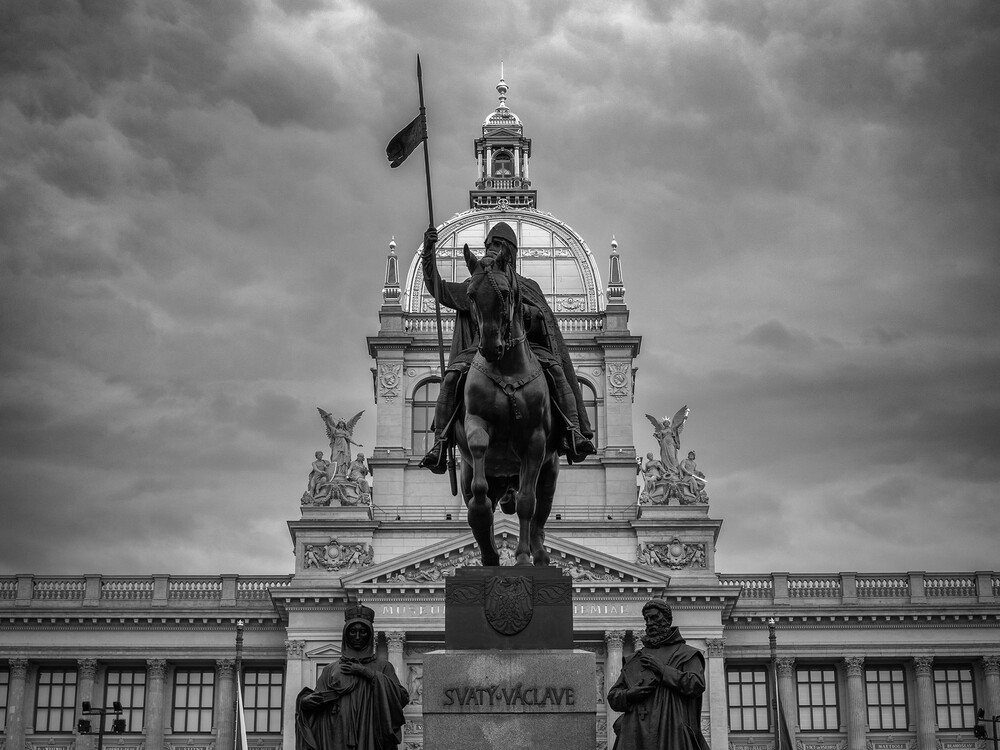Competition and Vision: Birth of a National Monument
The idea of erecting a new, representative statue of Saint Wenceslas took shape in the late 19th century. A public competition launched in 1894 drew vigorous debate. Although everyone expected Josef Václav Myslbek to prevail, the jury ultimately awarded two second prizes - one to Myslbek, the other to Bohuslav Schnirch.
Myslbek envisioned Wenceslas as a dynamic warrior; Schnirch portrayed him as a blessing saint. The commission finally went to Myslbek, setting the stage for a project that would redefine Prague’s skyline.
Master Myslbek and His Life’s Work
For Josef Václav Myslbek, the monument became a life-long mission. Over thirty-five years, marked by bursts of inspiration and creative crises, he produced more than fifty studies and scale models of both horse and rider in pursuit of the perfect expression.
His frustration was legendary: “Vaška shodil!” (“He threw Václav down!”) he exclaimed after destroying one model in a fit of artistic doubt. That relentless drive for excellence defines the final work.
The Horse Ardo and the Quest for Perfection
Myslbek lavished special attention on the steed. After testing several designs he settled on Ardo, a seven-year-old Oldenburg stallion from a military stud farm. Ardo posed repeatedly, even inside the sculptor’s studio, while Myslbek captured every sinew and stride.
The resulting realism in the horse’s anatomy and motion remains a benchmark for equestrian sculpture.
Saint Wenceslas on Horseback: The Central Sculpture
The bronze centerpiece presents Saint Wenceslas as a resolute ruler. Clad in chain mail, helmet, and cloak, he sits firmly in the saddle, gripping a lance with banner in his right hand. Calm strength radiates from his posture. Including the spear, the figure rises 23.6 feet (7.2 m).
Myslbek drew direct inspiration from the medieval Crown Jewels known as the Wenceslas Treasure.
An Inscription as an Eternal Message
Architect Alois Dryák designed the massive polished-granite pedestal, which bears the famous plea:
“Saint Wenceslas, Duke of the Czech Land, Our Prince, Do Not Let Us or Our Descendants Perish.”
Carved in stone, this fervent invocation underscores Wenceslas’s role as the nation’s eternal protector and adds profound spiritual depth to the monument.
The Four Guardians: St. Ludmila and St. Procopius
Flanking the base are four additional patrons of Bohemia. At the front left stands Saint Ludmila, Wenceslas’s grandmother, holding an open gospel and wearing a veil that alludes to her martyrdom.
Front right is Saint Procopius, abbot of Sázava, in monastic habit with book and tonsure; Myslbek famously modeled the saint’s face on his own likeness.
The Four Guardians: St. Agnes of Bohemia and St. Adalbert
Rear left, Saint Agnes of Bohemia appears as a princess-turned-nun, crown resting on her cowl, hands joined in prayer. Completing the quartet at rear right is Saint Adalbert, second bishop of Prague, vested in episcopal robes, right hand raised in blessing, crozier and book in his left.
Tradition says his features echo Archbishop František Schönborn.
Artistic Details and Ornamentation
Beyond the primary figures, the monument is rich in decorative art. Sculptor Celda Klouček crafted the pedestal’s bronze friezes, inscriptions, and a Wenceslas eagle emblem.
Together, the bronze statuary and polished-granite base form a cohesive ensemble completed in stages until 1924.

